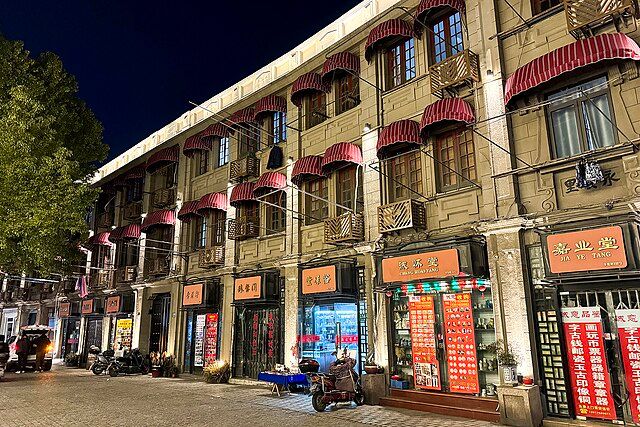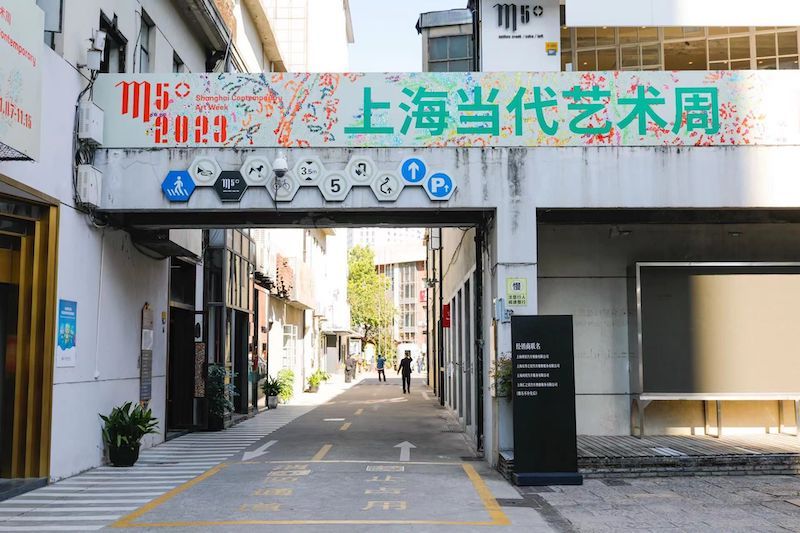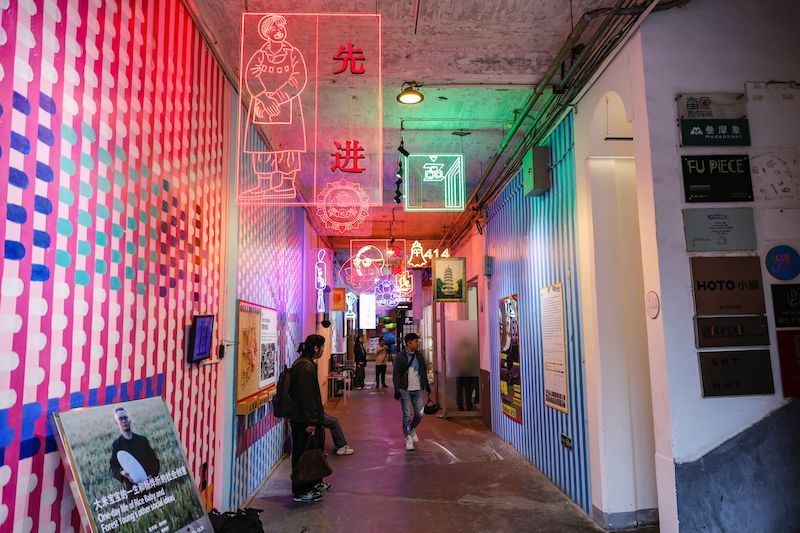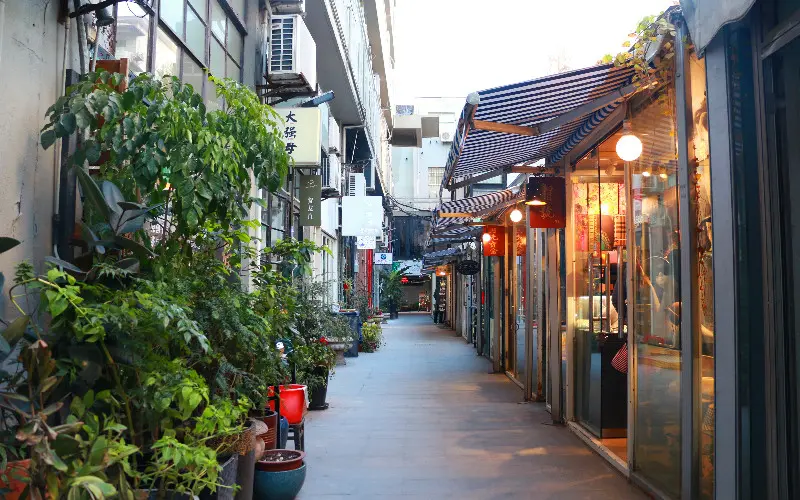शंघाई में घूमने लायक 4 कलात्मक और सांस्कृतिक क्षेत्र
संस्कृति, कला, परंपरा और आधुनिकता का मिश्रण।
सारांश
चीन द्वारा अधिक देशों को वीज़ा-मुक्त प्रवेश की अनुमति दिए जाने के बाद, क्या आप भी उन लोगों में से एक हैं जो चीन की यात्रा पर विचार कर रहे हैं? शंघाई, चीन में घूमने के लिए सबसे लोकप्रिय शहरों में से एक है, यह एक हलचल भरा महानगर है जिसमें ऊंची-ऊंची गगनचुंबी इमारतें और नियॉन लाइटें हैं जो क्षितिज पर छाई हुई हैं। शंघाई की यात्रा मुख्य आकर्षणों जैसे किद बंड, दओरिएंटल पर्ल टीवी टॉवर, और शंघाई डिज़्नीलैंड.
लेकिन, शंघाई सिर्फ़ गगनचुंबी इमारतों, भव्य वास्तुकला और भविष्य के विकास के लिए ही नहीं है। शंघाई में कला और संस्कृति का एक जीवंत दृश्य भी है। शंघाई में कला, संस्कृति और परंपरा के जीवंत दृश्यों को और अधिक जानने में रुचि रखते हैं? तो, इन 4 क्षेत्रों को क्यों न देखें!
1. झांग युआन (张园)

झांग युआन, या 张园 (झांग गार्डन), आज शंघाई में सबसे लोकप्रिय स्थानों में से एक है। 1885 में बना यह उद्यान कभी शंघाई का सबसे प्रसिद्ध उद्यान था। 1900 के दशक की शुरुआत में इसने अपनी लोकप्रियता खो दी, लेकिन सरकार ने हाल ही में इस क्षेत्र की मरम्मत और जीर्णोद्धार किया है। जीर्णोद्धार किए गए उद्यान ने 2022 के अंत में अपने दरवाजे फिर से खोले, और स्थानीय लोगों के बीच तेजी से लोकप्रिय हो रहा है। आज, यह उद्यान शंघाई का सबसे बड़ा और सबसे अच्छी तरह से संरक्षित उद्यान हैशिकुमेनमकान (लेन हाउस).
झांग युआन के ऐतिहासिक आकर्षण ने कई लक्जरी ब्रांडों को आकर्षित किया है। डायर, बुलगारी और लुई वुइटन जैसे उच्च-स्तरीय ब्रांडों ने झांग युआन में बुटीक और/या पॉप-अप स्टोर स्थापित किए हैं, जो परिसर की सांस्कृतिक और सामाजिक विशिष्टता का लाभ उठाते हुए उपभोक्ताओं के लिए अधिक इमर्सिव अनुभव प्रदान करते हैं।

वर्तमान में, झांग युआन का केवल पश्चिमी भाग ही जनता के लिए खुला है। पूर्वी भाग 2026 के अंत तक खुलने वाला है। विकास योजना के तहत, पश्चिमी भाग (जो वर्तमान में खुला है) सबसे अधिक व्यावसायिक और व्यस्त भाग होगा। पूर्वी भाग को वर्तमान में खुले पश्चिमी भाग की तुलना में शांत रखने की योजना है, और इसमें अधिक कला दीर्घाएँ होंगी; और दक्षिणी भाग को भी प्रदर्शन कलाओं के लिए एक फैशनेबल क्षेत्र में बदल दिया जाएगा।
लेकिन, अगर आप लग्जरी आइटम नहीं खरीदना चाहते हैं, तो भी झांग युआन अपनी मौजूदा स्थिति में घूमने लायक है। यहां कैजुअल रेस्टोरेंट और कैफ़े भी हैं, जहाँ आप दोपहर बिता सकते हैं। या फिर गलियों में टहलें, वास्तुकला और प्रतिष्ठानों की प्रशंसा करें और समयबद्ध प्रदर्शनियों को देखें!
🚆वहाँ कैसे आऊँगा: मेट्रो से नानजिंग वेस्ट रोड स्टेशन तक जाएं (मेट्रो लाइन 2, 12 और 13)
2. डुओ लुन रोड कल्चरल स्ट्रीट (多倫路文化名人街)

हांगकौ जिले में बसा डुओ लुन रोड, आगंतुकों को 20वीं सदी की शुरुआत में वापस ले जाता है। पेड़ों से सजी यह सड़क औपनिवेशिक युग की हवेलियों से सजी है, जो 1900 के दशक की शुरुआत के उथल-पुथल भरे दौर के दौरान शहर के ऐतिहासिक महत्व को दर्शाती है।
सांस्कृतिक सड़क कभी लू शुन, माओ डुन और गुओ मोरुओ जैसे कई चीनी लेखकों और लेखकों का घर हुआ करती थी। आज, इस सड़क पर सार्वजनिक और निजी संग्रहालय और किताबों की दुकानें, साथ ही चाय की दुकानें, गैलरी और अनोखे कैफ़े और कला स्थल हैं।
कई दिलचस्प दुकानों और संग्रहालयों के अलावा, यह सड़क 20वीं सदी की शुरुआत में शंघाई की झलक भी दिखाती है। जैसे-जैसे आप सड़क पर चलते हैं, पुरानी इमारतों की वास्तुकला को देखते हैं - आप चीनी शैलियों के साथ इस्लामी, यहूदी और फ्रांसीसी शैलियों के तत्वों को देख पाएंगे।

सड़क के किनारे कुछ मुख्य आकर्षणों में चीनी शैली में निर्मित ईसाई चर्च होंगडे मंदिर और राजनीतिक संग्रहालय शामिल हैं, जहाँ लीग ऑफ़ लेफ्ट-विंग राइटर्स की स्थापना की गई थी। प्रसिद्ध लेखकों की मूर्तियों को प्रदर्शित करने वाले मूर्तिकला उद्यान और शंघाई डुओलुन म्यूज़ियम ऑफ़ मॉडर्न आर्ट को भी अवश्य देखें।
🚆वहाँ कैसे आऊँगा: मेट्रो से डोंगबाओक्सिंग रोड स्टेशन (मेट्रो लाइन 3) तक जाएं
3. एम50 क्रिएटिव पार्क

M50, मोगनशान 50 का संक्षिप्त रूप है, जो शंघाई का समकालीन कला जिला है। पूर्व औद्योगिक क्षेत्र में स्थित, M50 समकालीन कलाकारों, डिजाइनरों और फोटोग्राफरों का केंद्र है। इस जिले में कई गैलरी और स्टूडियो हैं, जो विभिन्न माध्यमों में अत्याधुनिक कामों का प्रदर्शन करते हैं। औद्योगिक पृष्ठभूमि कलात्मक वातावरण में एक नुकीला और शहरी विपरीतता जोड़ती है।
जैसे ही आप मोगनशान रोड से गुजरेंगे, आपको कई गैलरी स्पेस दिखाई देंगे, जिनमें से प्रत्येक में अलग-अलग शैलियों और माध्यमों की कलाकृतियाँ पेश की गई हैं। अपनी कलात्मक इंद्रियों को मुक्त होने दें क्योंकि आप अलग-अलग कलाकृतियों और कामों की सराहना करते हैं - कुछ पूरी हो चुकी हैं, जबकि अन्य अभी भी प्रगति पर हैं। और अगर आप किसी भी टुकड़े में रुचि रखते हैं या यदि आप अधिक जानना चाहते हैं, तो गैलरी के मालिक आपको कलाकृतियों के बारे में बताने में बहुत खुश होंगे!

सिर्फ़ गैलरी के अलावा, आप गलियारों में भी इंस्टॉलेशन देख सकते हैं और इमारतों की दीवारों पर स्ट्रीट आर्ट भी देख सकते हैं। गैलरी स्पेस के अलावा, M50 में छोटे-छोटे कैफ़े और दुकानें भी हैं जो एक बहुत ही कलात्मक माहौल प्रदान करती हैं।
एम50 एक रचनात्मक केंद्र है जो पर्यटकों के आकर्षण का केंद्र नहीं है, बल्कि यह एक ऐसी जगह है जहाँ महत्वाकांक्षी कलाकार इकट्ठा होते हैं। अगर आप भीड़-भाड़ से दूर दोपहर बिताना चाहते हैं, तो एम50 एक आरामदायक दोपहर के लिए एक बढ़िया विकल्प है।
🚆वहाँ कैसे आऊँगा: मेट्रो से जियांगनिंग रोड स्टेशन (मेट्रो लाइन 13) तक जाएं
4. तियानज़ीफ़ांग (田子坊 )

तियानज़ीफ़ांग शंघाई के सबसे लोकप्रिय पर्यटन क्षेत्रों में से एक है। पुराने फ्रेंच क्वार्टर में स्थित, यह पर्यटकों के लिए एक कलात्मक क्षेत्र होने के लिए सबसे प्रसिद्ध है। इस क्षेत्र में एक 'मूल' वाइब बरकरार है, जिसका बड़े पैमाने पर पुनर्विकास नहीं हुआ है। क्षेत्र में इमारतें, गलियाँ और सड़कें अतीत के अवशेष हैं, जो पुराने शंघाई की झलक दिखाती हैं।
तियानज़ीफ़ांग अपनी कई कला और शिल्प की दुकानों के साथ-साथ किफ़ायती बार और कैफ़े के लिए जाना जाता था। यह एक आकर्षक स्थल भी था क्योंकि ये दुकानें वास्तविक आवासों के बीच में थीं, और यह कई लोगों के लिए शंघाई के जीवन के तरीके को देखने का एक अवसर था।
हालांकि, जैसे-जैसे इसकी लोकप्रियता बढ़ी, कई आवासीय इमारतों को दुकानों में बदल दिया गया; और कीमतें बढ़ने लगीं। फिर भी, दुकानों की असंख्यता और ट्रेंडी (या इंस्टाग्रामेबल) दुकानों और पृष्ठभूमि की विस्तृत विविधता ने क्षेत्र में कई आगंतुकों को आकर्षित करना जारी रखा।
महामारी के बाद से, कई मूल दुकानें बाहर चली गईं; और स्थानीय लोग अब झांग युआन या अन्य स्थानों पर जाना पसंद कर रहे हैं - जिससे यह पहले की तुलना में कम भीड़भाड़ वाला हो गया है। लेकिन जबकि तियानज़ीफ़ांग उतना नहीं हैकलात्मकन तो यह पहले जैसा लोकप्रिय है और न ही यह पहले जैसा फैशनेबल स्थल है, फिर भी यह अपनी अनेक विशिष्ट दुकानों, रेस्तरां और अनेक फोटो अवसरों के साथ एक लोकप्रिय स्थल बना हुआ है।
🚆वहाँ कैसे आऊँगा: मेट्रो से दापु ब्रिज स्टेशन तक जाएं (मेट्रो लाइन 9)
चीन के लिए नोमैड ट्रैवल ई-सिम के साथ शंघाई में जुड़े रहें
चाहे आपका रोमांच आपको कहीं भी ले जाए, एक के साथ जुड़े रहेंचीन के लिए घुमंतू यात्रा eSIM. नोमैड की ई-सिम आपको निम्नलिखित तक पहुंच प्रदान करती हैदुनिया भर में 170 से अधिक स्थानों पर किफायती डेटा eSIM— जिसमें चीन भी शामिल है।
विभिन्न स्थानीय, क्षेत्रीय और वैश्विक डेटा प्लान में से चुनें, उड़ान भरने से पहले अपना eSIM खरीदें और इंस्टॉल करें, और आगमन के कुछ ही मिनटों के भीतर मोबाइल नेटवर्क से कनेक्ट करें। यात्रा के बीच में डेटा खत्म हो रहा है? बस Nomad ऐप में ऐड-ऑन खरीदें।
शंघाई की यात्रा की योजना बना रहे हैं?चीन यात्रा eSIMअपनी यात्रा के दौरान जुड़े रहने के लिए।